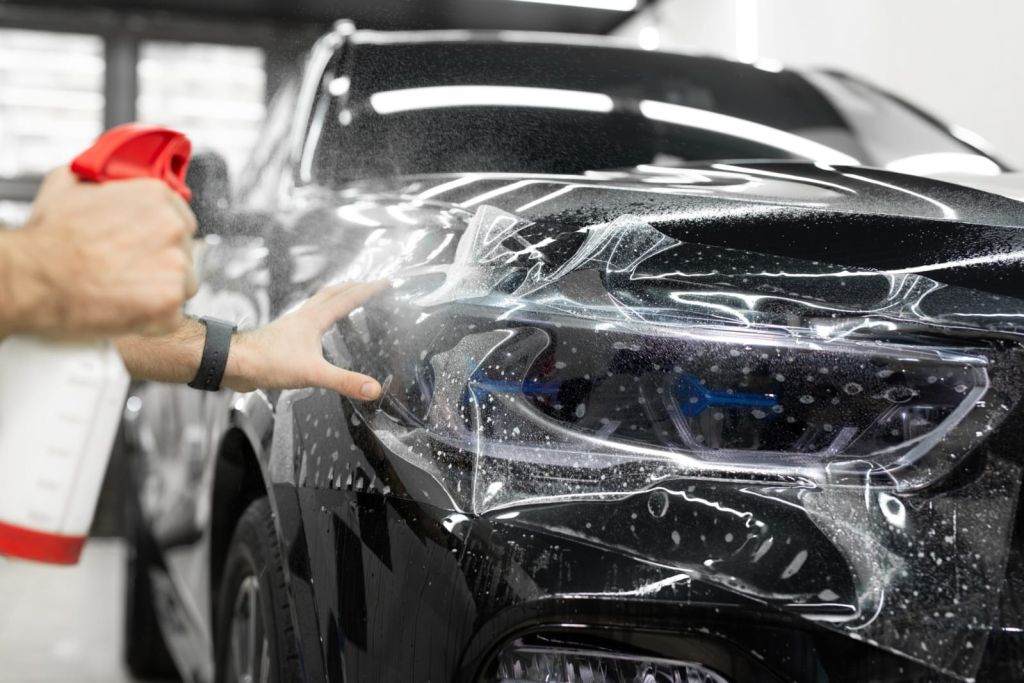Preserve Your Car’s Shine: Proven Paint Protection Methods

An ideal car coat is not just a reflection, its pride, protection, and permanence. To a driver, it means every turn of the automobile still shining brand new year into the future, never experiencing fading, oxidation, or swirl mark damage. Registered Business Address Protecting paint protects the cosmetic and structural integrity of your vehicle. Once the clear coat starts to crack, the color becomes dull, the contaminants stick together, and the surface becomes weak. That’s why your car paint needs to be protected.
Chemical Armor for Longevity
Ceramic coatings alter the surface chemistry by forming covalent bonds with the clear coat, becoming part of the paint itself rather than a layer sitting on top. They form a hard, water-repelling shell that will not etch, will repel road grime, and withstand UV breakdown.
Some of the finest formulas you can find in Detail King ceramic coating supplies use nano-sized SiO₂ particles. These fill up microscopic pores in the paint and provide no space for water or contaminants to cling to. Upon curing, the surface tension of the coating makes water bead aggressively, removing dirt with every wash. One incorrect application is using it in inclement weather. Water hinders bonding, leading to the formation of uneven cures that negatively affect protection.
Paint Protection Film for a Physical Shield

PPF, often called clear bra or paint wrap, is a thermoplastic urethane film applied over painted surfaces. This material absorbs abrasion and has self-healing polymers in the top layer, which erase swirl marks and minor scratches.
Certain high-end versions have elastomeric memory, which allows them to regain their original shape even after slight deformation. This protects against impact scuffs and rock chips from road debris. A unique detail rarely discussed is how PPF thickness affects optical clarity. Films thicker than 8 mils provide stronger protection but may slightly dull metallic flakes in paint. Professional installers counter this by using optically clear adhesives that reduce light refraction and preserve factory gloss.
Synthetic Sealants
Synthetic sealants are created by mixing wax and ceramic compounds. They contain polymers that create a flexible coating, repelling impurities but adding a glossy appearance to the surface. The biggest asset is ease of reapplication, which is perfect for individuals who enjoy frequent maintenance without ceramic treatment.
More advanced products contain cross-linking and re-aligning polymers that re-tighten the film, which re-aligns every time the wash occurs. Sealants are hydrophobic even after mechanical washing and exposure, enabling them to remain unbroken. They also adhere more firmly to polished surfaces with mild heat activation, which adds to longevity and depth.
Natural Gloss with a Short Fuse
Carnauba wax remains in fashion for its deep, natural shine, but it’s in the dark. Real carnauba is hard and must be blended with oils and polymers to coat evenly. Its warmth and depth that it creates in darker shades are due to the manner in which it refracts light and not reflects it. But heat changes melt its shape, cutting life short. For wax lovers who want to use it, layering it over a synthetic sealant can add endurance and depth.
Each paint protection method works through distinct chemistry and structure, but durability depends on preparation, environment, and upkeep. Whether through molecular bonding, physical shielding, or flexible polymers, true paint protection is about integration, not isolation. A small but crucial habit is using filtered water during rinsing. Minerals in tap water etch micro-spots into coatings, gradually dulling finish clarity; even the strongest protection can’t fight hard water alone.
